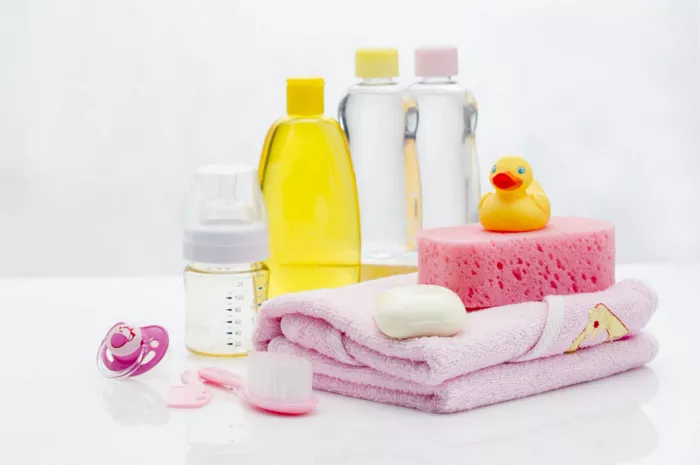Bathing a newborn is a crucial aspect of infant care, balancing hygiene with the delicate nature of their developing skin. Choosing the Right Time for Bath Products is a decision that requires careful consideration to promote cleanliness while safeguarding against potential skin irritations. This comprehensive guide explores the optimal timing and considerations for introducing bath products into your newborn’s bathing routine, ensuring their skin remains healthy and protected.
Understanding Newborn Skin
Newborn skin is remarkably different from adult skin. It is thinner, more delicate, and undergoes rapid changes during the early weeks of life. The epidermis, or outer layer of skin, is still developing, making it more susceptible to dryness, irritation, and absorption of substances. These characteristics necessitate gentle care and a cautious approach when it comes to introducing any products, including bath cleansers.
Initial Baths: Water Is Sufficient
During the first few weeks of life, the primary goal of bathing a newborn is to maintain cleanliness without disrupting the natural protective barrier of their skin. Avoiding Bath Products Early On is recommended by healthcare professionals, including the American Academy of Pediatrics (AAP), until certain milestones are reached:
Umbilical Cord Stump: It is advisable to wait until the umbilical cord stump naturally falls off, typically within the first one to two weeks after birth, before using soap or cleansers.
Circumcision Healing: For male infants who are circumcised, it is essential to wait until the surgical site has healed completely before introducing bath products to prevent irritation or infection.
See Also: Can You Use Soap on Newborns: Things You Need To Know
Signs It’s Time for Bath Products
The decision to introduce bath products should be guided by your baby’s individual needs and developmental milestones. When to Consider Using Bath Products typically arises when water alone is no longer sufficient to effectively cleanse the skin. Common indicators include:
Residue Buildup: Milk, spit-up, and diaper cream can leave residues that water alone does not easily remove. Using a mild cleanser can help effectively clean these areas without stripping the skin of essential oils.
Body Odor: As babies grow and become more active, they may develop mild body odors that gentle cleansers can help manage.
Choosing Safe Bath Products
Selecting Safe Bath Products for Newborns is paramount to avoid potential irritants and allergens. When choosing bath products, consider the following criteria:
Hypoallergenic Formulations: These products are less likely to cause allergic reactions or skin sensitivities.
No Harsh Chemicals: Avoid cleansers that contain fragrances, parabens, sulfates, and other harsh chemicals, which can irritate and dry out delicate skin.
Pediatrician Recommended: Products endorsed by pediatricians or specifically labeled for newborn use are generally safer and more suitable for delicate skin.
Introducing Bath Products Gradually
The introduction of bath products should be gradual to monitor your baby’s skin reaction and tolerance. Here are some tips for Gradual Introduction of Bath Products:
Patch Test: Before using a new bath product extensively, perform a patch test by applying a small amount to a small area of your baby’s skin. Wait at least 24 hours to ensure there is no adverse reaction before proceeding with broader application.
Minimal Usage: Start with a small amount of mild, fragrance-free cleanser diluted in water. Focus on areas prone to dirt accumulation, such as folds and creases, while avoiding excessive use over the entire body.
Bathing Frequency and Product Use
The frequency of bathing and the use of bath products should be tailored to your baby’s needs, activities, and skin condition:
Daily Cleansing: Some babies may benefit from daily baths, particularly before bedtime, using gentle cleansers sparingly to maintain cleanliness and promote relaxation.
Spot Cleansing: For babies who do not require daily bathing, spot cleaning with warm water and a soft cloth is often sufficient to keep the diaper area and face clean between full baths.
Special Considerations
Certain situations may necessitate special considerations when it comes to using bath products on newborns:
Dry or Eczema-Prone Skin: Babies with dry skin or conditions such as eczema may require special moisturizing cleansers recommended by healthcare providers to help maintain skin hydration and integrity.
Premature Babies: Premature infants often have more fragile and sensitive skin, requiring extra caution when introducing new products. Healthcare providers may recommend delaying the use of bath products until the baby’s skin matures sufficiently.
Conclusion
In conclusion, determining the appropriate time to introduce bath products into your newborn’s care routine is a decision that should prioritize their skin health and developmental stage. While water alone is sufficient in the initial weeks, gradual integration of gentle cleansers can help manage hygiene effectively without compromising the natural protective barrier of the skin. Always opt for products specifically formulated for newborns, avoid harsh chemicals, and monitor for any signs of skin irritation or allergies. By following these guidelines, you can ensure that bath time remains a safe, enjoyable experience for both you and your baby, fostering healthy skin and overall well-being.


